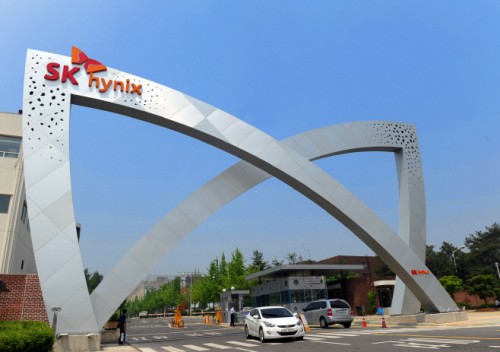 |
| SK hynix logged more than 10 trillion won in quarterly operating profit for the first time in company history in the third quarter, on the back of AI server memory demand. / Source: SK hynix |
SK hynix posted the strongest quarterly results in its history in the third quarter, driven by explosive demand for high-value memory chips used in artificial intelligence (AI) data centers.
The company announced on October 29 that it recorded revenue of 24.4489 trillion won and operating profit of 11.3834 trillion won in the third quarter, for an operating margin of 47%. Net profit came in at 12.5975 trillion won, a net margin of 52%. This is the first time since the company’s founding that quarterly operating income has exceeded 10 trillion won, and it marks an all-time high on a quarterly basis.
SK hynix attributed the surge to increased AI infrastructure spending by its customers. The company said, “AI infrastructure investment by customers sharply expanded overall memory demand,” adding that sales of high-value products such as 12-layer HBM3E and server-grade DDR5 supported the performance.
As AI server adoption accelerated, shipments of high-capacity DDR5 modules of 128GB and above more than doubled compared with the previous quarter. In NAND, enterprise solid-state drives (eSSD) for AI servers also made up a greater share of sales.
This earnings strength significantly improved the company’s balance sheet. Cash and cash equivalents stood at 27.9 trillion won at the end of the quarter, up 10.9 trillion won from the previous quarter. Total borrowings were 24.1 trillion won, putting SK hynix into a net cash position of roughly 3.8 trillion won.
Looking ahead, SK hynix expects AI demand to spread beyond training to inference, fueling broader needs for high-performance DDR5 and eSSD. The company said that with major AI companies laying out aggressive data center expansion plans, demand is rising not only for HBM but also for general server memory.
To keep pace, SK hynix plans to accelerate the transition to its stable 10-nanometer-class sixth-generation (1c) process and expand supply across server, mobile and graphics applications. In NAND, the company will increase shipments of TLC and QLC products based on its 321-layer technology.
The company also said it has completed next year’s HBM supply agreements and established mass production readiness for HBM4, development of which was finalized in September. Shipments of HBM4 will begin in the fourth quarter, with full-scale volume expansion planned for next year.
SK hynix noted that it has already secured customer demand through next year for both DRAM and NAND. It has begun moving equipment into the newly opened M15X fab in Cheongju to expand capacity, and said capital spending next year will increase from this year.
“AI-driven innovation is pushing the memory market into a new paradigm, and demand is now spreading across every product category,” said Kim Woo-hyun, SK hynix’s chief financial officer. “We will continue to meet customer demand with market-leading products and differentiated technology, and solidify our leadership in AI memory.”
Most Read
-
1
-
2
-
3
-
4
-
5
-
6
-
7





















